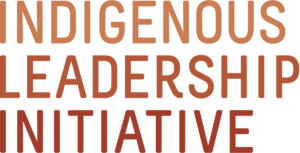Indigenous-Led Conservation from Australia to Canada
INDIGENOUS LEADERSHIP INITIATIVE
Canada has committed to protecting at least 17% of lands and freshwaters by 2020 as part of the global effort to stem the tide of animal and plant extinctions. The most effective way for Canada to reach this goal is to support conservation work led by Indigenous Peoples. About 11% of lands have been protected so far, and progress is building across the country. Moving forward, Canada can learn from a powerful model: Australia.
About 11% of lands have been protected so far, and progress is building across the country. As it moves forward, Canada can learn from a powerful model: Australia.
The Australian government has long recognized that Indigenous Peoples have enduring relationships with the land and strong cultural responsibilities to care for it.
Australia’s long-term support of Indigenous Protected Areas and Indigenous land management has led to major conservation gains and generated widespread social and economic benefits. Growth in the country’s conserved lands over the last decade has come predominantly from new Indigenous Protected Areas, helping Australia achieve the 17% target by 2014.
Through the Canada Nature Fund and pilot investments in Guardians, Canada has the potential to make similar gains. Many Indigenous Nations are already proposing protected areas and Indigenous Guardian programs are actively stewarding lands and waters across the country. Sustaining and expanding these investments will deliver more diverse benefits across Canada.
As Canada moves forward with its ambitious plans, a delegation of Indigenous land managers from Australia will travel to Canada in February to exchange experiences and talk with government and Indigenous leaders in Yellowknife, Ottawa and Victoria about the programmes’ dramatic success.
AUSTRALIA: DOCUMENTED BENEFITS OF INVESTING IN INDIGENOUS CONSERVATION
Almost 45 percent of Australia’s national system of parks and conserved lands are made up of Indigenous Protected Areas. Created through partnerships between Indigenous land owners and the Commonwealth Government, there are now 75 Indigenous Protected Areas covering over 68 million hectares of land and sea.
Its Indigenous Protected Areas (IPAs) are similar to national parks but managed by local Indigenous peoples through the “Working on Country” program. The program supports 118 Indigenous Ranger groups that use a combination of traditional methods and western science to safeguard their land and culture through contracts with Crown government.
The Australian government has invested $840 million CAD in Indigenous Ranger programs from 2007 to 2023. This includes almost $240 million CAD in new funding in last year’s federal budget designed to support Indigenous Rangers.
These investments translate into tangible savings for taxpayers. A study commissioned by the Department of Prime Minister and Cabinet found that each $1 invested in integrated Indigenous Protected Area and Indigenous Rangers programs can generate $3 in social, economic and cultural benefits, including through reduced income support, health spending and justice costs.
Research shows that ranger programs have transformative impacts on families and communities. They offer professional training and good wages. They provide youth with a sense of purpose and deeper connection with elders and culture. And they promote an active lifestyle that improves public health. These opportunities have been documented to have positive effect in addressing the cycles of substance abuse, domestic violence and incarceration.
Last year’s government announcement pledged to fund five new IPAs, which are expected to cover nearly 14 million hectares—twice the size of Tasmania—and increases the total land area of Indigenous Protected Areas to larger than the state of New South Wales.
CANADA POISED TO DELIVER SIMILAR BENEFITS:
Sustained Canadian investment in Indigenous Protected Areas and Indigenous Guardians would deliver similar benefits, from conserving more lands to strengthening Indigenous communities, to providing more clean water and vibrant lands for all Canadians.
Several recent efforts have helped enhance conservation partnerships between Crown governments and Indigenous Nations.
With provinces and territories, Canada has pledged to protect at least 17% of lands by 2020.
As part of the Canada Nature Fund announced in 2018, the federal government has dedicated $175 million toward meeting this goal, including a strong commitment to work with Indigenous communities, many of which are eager to create Indigenous Protected Areas managed with Indigenous Guardian programs.
In addition, the federal government invested $25 million in 2017 for a pilot project for Indigenous Guardians.
This greater recognition of Indigenous stewardship has led to new conservation gains, such as the 2018 establishment of the Edéhzhíe Dehcho Protected Area/National Wildlife Area, a stretch of 14,249 square kilometres of boreal forest and clean waters west of Yellowknife. The new protected area will be managed through a partnership between the Canadian Wildlife Service and the Dehcho K’ehodi Indigenous Guardians, who are skilled in traditional knowledge and trained in western science.
There are more than 40 Indigenous Guardian programs caring for traditional lands. The Haida Gwaii Watchmen off the West Coast, for instance, have been operating since 1981. They patrol the coast, monitor forestry and preserve cultural sites. They also co-manage the Gwaii Haanas National Park Reserve and Haida Heritage Site with Parks Canada.
As in Australia, Canadian IPAs and Guardians offer a path to protecting Indigenous culture, drawing on vast Indigenous traditional knowledge and environmental skills, and generating jobs, economic growth and the attendant social and health benefits.
A case study by the same experts who assessed Australia’s “Working on Country“ was conducted into two emerging guardian programmes in the NWT in 2016. It indicated those fledgling projects already delivered about $2.50 of social, economic, cultural and environmental benefits for every $1 invested, and that, with support from a national network, the value could increase to up to $3.70 for each dollar of investment.
The Indigenous Leadership Initiative and the International Boreal Conservation Campaign are sponsoring a multi-city tour of Indigenous land managers from Australia. They will meet with Indigenous Guardians and government officials in Ottawa, Victoria and Yellowknife to exchange experiences and build support for long-term permanent investments in the creation of IPAs supported by Indigenous Guardians.
For more information on the Australian and Canadian experiences:

